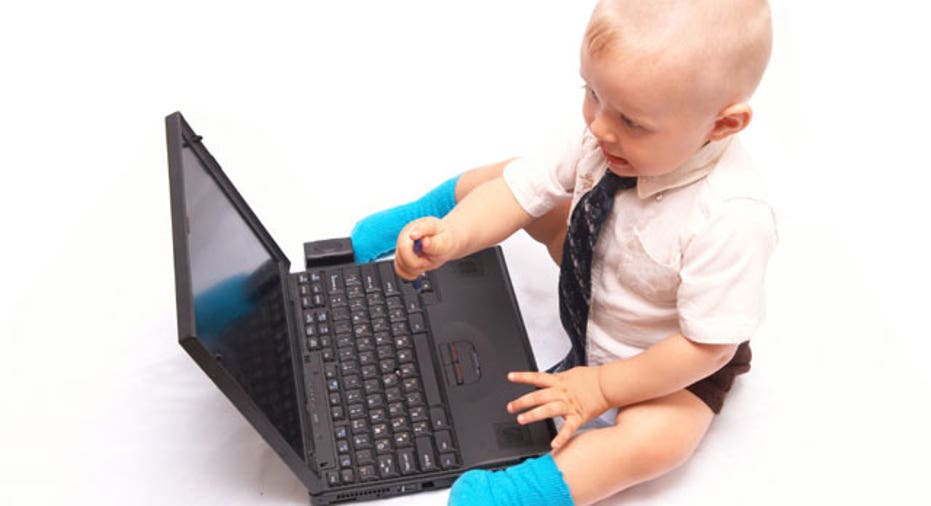How to Invest for Your Baby

If you’re a new parent up to your eyes in diapers, chances are you may also be overrun with checks and cash from family and friends welcoming the baby to the world. Assuming you don’t need the cash for necessities like strollers and formula, it’s a good idea to put the money aside for your child in a safe place where it can mature—but which saving vehicles are best? We checked in with certified financial planners nationwide to get their opinion on the best places to set aside baby’s money for safekeeping and growth.
1.) Avoid savings bonds
“First things first, I wouldn’t use savings bonds,” says Kelly Campbell, certified financial planner and founder of Campbell Wealth Management in Alexandria, Va. “They typically don’t make enough interest, and often don’t outpace inflation.”
Campbell suggests news parents cash out any savings bond gifts immediately, and put it into something that will yield higher growth during the child’s lifetime.
2.) 529 plans for college savings
Money put in a 529 plan grows tax deferred, and as long as it’s used for qualified educational purposes, it won’t get taxed when withdrawn, according to Campbell. In the event the 529 funds are used for non-educational expenses, the funds will be subject to a 10% tax by the IRS.
“One of the nice things about the 529 plan is that grandparents and uncles and family members can contribute to the 529 plan at birthdays and Christmas, and that can be their legacy they offer the child, as opposed to toys they’re only going to play with for five minutes,” says Michael Hensley, managing partner of Guardian Capital Advisors in Raleigh, N.C.
There is also no deadline for when the funds in a 529 plan must be used, and the beneficiary can be changed at any time.
“If your child gets a scholarship for their undergraduate studies and then wants to get an MBA at 45, the funds can still be used,” says Hensley. “Likewise, if you have two children and the first child ends up not needing the funds, you can simply change the name on the plan and use it for your second child. The funds will continue to grow indefinitely until they’re used, so it can even be passed onto grandchildren or great grandchildren.”
In most states, when you put money into a 529 plan, you will also be given a state tax deduction, according to Dan Yu, managing director at Eisneramper Wealth Advisors in New York. If you invest money in the plan when your child is an infant, the growth could easily reach 3% to 4% by the time the child reaches college age, he adds.
3.) Roth IRAs grow with children
“Roth IRAs are great as kids get older and they start doing chores or babysitting,” says Campbell. “They have to have earned income, but won’t be earning enough that would require them to file a tax return.”
Parent should keep in mind that funds in a Roth IRA will be taxed if withdrawn before age 65.
“Parents need to keep in mind that the Roth IRA can’t be used to pay for college or any other pre-retirement expense without a penalty,” says Campbell.
4.) Stocks can teach investing skills later in life
“When your child is an infant, you can go online and buy them stock in Disney and they’ll actually mail you a stock certificate that you can frame on the wall in their room,” says Campbell. “When they get older, you can use that stock to teach them how the market works and educate them on the financial world.”
Parents could purchase their children a portfolio of “fun” stocks that are applicable to their daily life in order to get them interested, he says.
“It’s all about opening a door to your child and teaching them about a company and how the stock market works. It’s about making them a better investor in the future. They’re not going to understand it at 1 or 2 years old, but by the time they hit 4 or 5, you can have these conversations,” Campbell says.
5.) A traditional savings account is great for infants and older children
“Many times, the savings account is the best place to start,” says Yu. “Even if you just have $400, it’s money your child can access anytime they need it.”
When the child gets older, they can do their own banking, and parents can even set up their own version of a 401(k) match.
“If your child has $50, you can tell them, ‘You can spend this now, or if you save it, mom and dad will match whatever you put in, so you’ll have $100,” says Yu. “You can give them their own passbook and one day they’re going to be proud of the money they have.”
?
Regardless of whether you’re a new parent, expecting a baby, or have kids in college, Hensley says your first priority should be your own cash flow and having enough money to pay bills.
“First priority is having money on hand for your day-to-day needs, your second priority should be your own retirement, and the third priority is saving for your children and their college educations,” says Hensley. “A child always has several opportunities for ways they can pay for college, but parents can be very limited in the options they have for paying for retirement.”



















